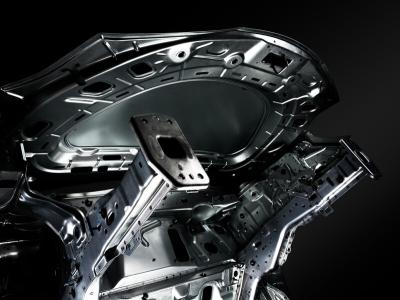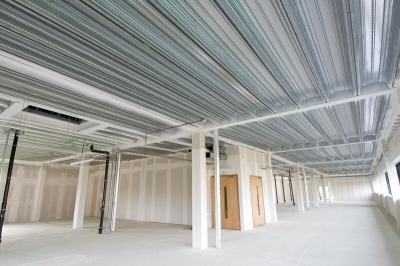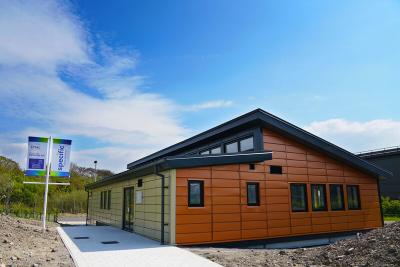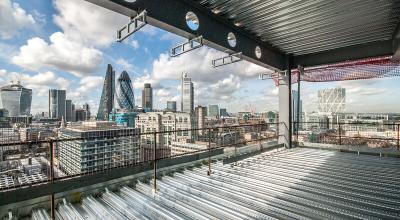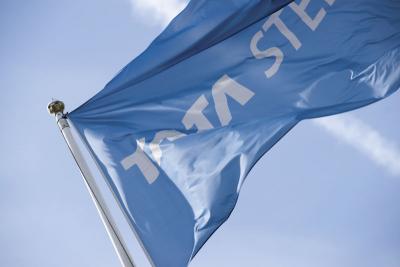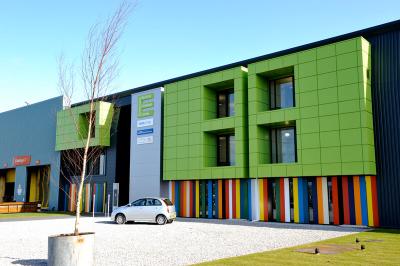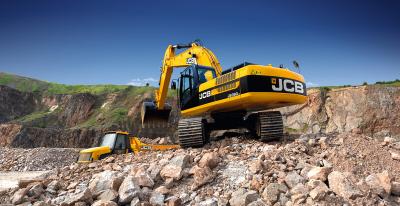Technical resources and product data published by manufacturers have migrated online, dispensing with the libraries of brochures that routinely filled the offices of architectural practices

In many ways, the digital tools employed to design buildings today have come a long way from the paper-based systems of several decades ago. Technical resources and product data published by manufacturers have migrated online, dispensing with the libraries of brochures that routinely filled the offices of architectural practices.
Has this digital product information moved the industry forward as much as it could have, though? Has the designer’s life been made easier?
Does digital product information make a designer’s life easier?
Designers compile information about the products they want in a wall or roof build-up, and store that information locally in their project files. While digitisation might save on the amount of paper being used, PDF product brochures or component BIM objects can easily end up sitting on hard drives and websites in the same way that printed literature once sat on office shelves.
In this sense, the digital information is acting in a very similar way to paper-based information. If such a system produces the right outcome - the building is delivered on time, on budget, and its designed performance is achieved on site - then is there a problem? Arguably, no, but product information can change at any stage of a project and those updates can easily go unnoticed.
The designer can send their proposal to the manufacturer for checking, but this is a time-consuming exercise as it may require a series of back-and-forth exchanges to refine the proposal. And once the manufacturer has checked the design, it is again incumbent on the designer to be aware of any changes - changes that may come to light only at the point that the contractor goes to place an order.
Even when a designer opts for a system build-up from a single manufacturer, familiar ways of working often result in a kind of barrier that disrupts the flow of information. As unintentional as that may be, this barrier often takes the manufacturer out of the equation and slows the design process.
Speeding up the flow of digital product information
Keeping on top of product updates for an entire project - be it changes to the performance characteristics, or the discontinuation of a component or colour range - is an impossible job for the designer.
No matter how diligently proposals are checked, it currently sits with the designer to be aware of changes within the product range. If, however, these changes occur at a later stage, such as when the contractor places an order, then the knock-on effect for the project is potentially significant.
This is not meant as scaremongering. It is a reflection of how true digitisation offers opportunities to break down this unseen barrier in communication.
Golden thread initiatives aim to introduce better certainty about product information. Until they are widely and fully adopted, however, designers will continue to create digital designs without being completely certain that their information is accurate or up to date.
This is where manufacturers can help, as they have an opportunity to create tools where their product database can seamlessly integrate with the project design. Designers can check the compatibility of components from the earliest stages, and the availability of products can be guaranteed for smooth supply once the project reaches site.
Collaboration across the project team
Automated ways of working, with a better flow of information between designer and manufacturer, help to drive the delivery of high-quality buildings. The positive effect of that better information flow compounds through the project team.
If a change in the design causes multiple specialists to alter their work, all of those changes have to be fed back to the designer for the proposal to be reassessed. Again, it is incumbent on the designer to contact the product manufacturer if they feel it necessary.
A design and configuration tool, linked to a manufacturer’s central database, can offer that essential feedback immediately. Its outputs are based on appropriate products (and associated guarantees) for any given location, making sure only relevant information is displayed.
For example, the tool might generate wind and snow load calculations based on the precise site address. It gives the designer an at-a-glance indication of whether any potential issues exist with the proposal, allowing collaboration between the designer and structural engineer - and maybe with the manufacturer too - on a suitable solution.
And if the configuration tool highlights no issues, then the calculations can simply be sent to the structural engineer for final sign off.
A time and cost saving digital platform produces compatible system build-ups that offer longevity, guaranteed performance, and peace of mind. By producing relevant information up front, and highlighting changes to product ranges, a good design and configuration tool can eliminate the possibility of critical information being missed in the back and forth of unnecessary and time-consuming communication.
What is Tata Steel’s COMBINED platform?
The COMBINED (COnnected & Managed BuildINg Envelope Design) platform is a building envelope design and configuration tool offered by Tata Steel.
It interfaces directly with the Revit, ArchiCAD, Allplan, SketchUp and AutoCAD platforms, providing an interface through which architectural professionals can independently configure and manage a system build-up from the full range of Tata Steel building envelope products.
The platform connects directly to Tata Steel’s managed and structured product database, and the configured specification is delivered into the 3D model instantly. Thousands of renders have been created for the whole Tata Steel product range to give a realistic look and feel to digital designs.
The chosen colour and finish are displayed accurately and quickly, saving designers time on applying their own renders and giving a realistic impression of the building’s proposed appearance.
In addition, users can select the level of information they need at each stage of the project, meaning designs are kept manageable and up-to-date, and all members of the project team are working collaboratively and with the latest information.
A full suite of analysis features - including thermal performance, condensation risk, and wind and snow load calculations - give confidence that the design will deliver the required level of building envelope performance.
Data verification features to preserve the ‘golden thread’
The term ‘golden thread’ has a couple of meanings within the UK construction industry but is centred on preserving design intent throughout a construction project. Better traceability and accountability in terms of design decisions improves transparency, for which reason Tata Steel’s COMBINED platform includes a data verification feature.
If the performance characteristics of a product change, or if a product is discontinued, the COMBINED platform provides an instant notification. The designer can then simply accept the updated information or, if the knock-on effect of the change is more substantial, immediately be directed to alternative products that offer an equivalent performance.
All data is linked directly to Tata Steel’s fully managed product database – the single source of truth. Maintaining the accuracy of product data is a part of data governance within Tata Steel, and the data within our COMBINED platform is managed and maintained by product technical managers who carry out all testing and certification.
Design and specification changes can therefore be made safely in the knowledge that the COMBINED platform will only allow compatible, available components, so there is never any risk of wasting time looking at solutions that aren’t appropriate for the project.
The tool also displays the available Confidex® Guarantee options for the building’s location, ensuring that the correct guarantee period is applied.
Visit Tata Steel’s COMBINED platform page to find out more about designing and configuring building envelope solutions.
The expert Tata Steel team remain on hand to offer advice and checks on any aspect of steel-clad building design.












